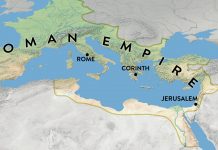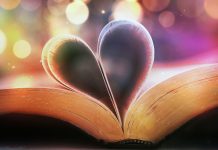Jesus’s words could not have been foreign to the Jewish people of His day. In an eminently oral culture, narratives, stories, parables and metaphors occupied an important place.[1]
The establishment of synagogues during the period of the Second Temple (516 BC – 70 AD) created a favourable context for the training of the Jewish people in the knowledge of sacred writings, through these means of communication.[2]
Synagogues were not only communal centres of worship, but also functioned as schools or courthouses.[3] These were preferred by the Jewish scholars who were part of the Pharisees, a group that was influential among the crowds of the late period of the Second Temple (Herod’s Temple).[4] These scholars were surrounded by disciples who paid attention to their every word which, often, were reproduced very accurately.[5] When they were not teaching their disciples, Jewish scholars theologically instructed the general public, usually on the Sabbath and during annual holidays.[6]
Jewish narratives and parables
Both the Pharisees and their descendants who constituted rabbinic Judaism[7] used parables to convey their teachings. Their parables often referred to a king, the kingdom was identified with God’s dominion, and the characters in the parables often behaved illogically.[8] These parables were almost always used to explain or illustrate an Old Testament passage.[9]
For instance, while explaining the fact that God does not forgive offenses against another person without reconciliation between the two parties involved, the parable of the forgiving king attributed to Rabbi Yosei (ca. 90-100 AD)[10] also explains the apparent discrepancy in the manifestation of divine favour in the passages from Deuteronomy 10:17 and Numbers 6:26. In the parable, a man promises the king that he will repay a loan granted by a neighbour before a certain date. The oath is made on the king’s life. The due date passes and the man does not return the loan. The borrower goes to the king to ask for his pardon. The king forgives him, but sends him to obtain forgiveness from the lender, too.[11]
Alongside parables, Jewish scholars used narratives and even fables to illustrate certain virtues and vices.[12] These narrative forms were often sprinkled with moral sayings, which were sometimes difficult and paradoxical. Hillel, one of the leaders of the Pharisees at the end of the first century BC, left us the following saying: “That which is hateful to you, do not unto another: This is the whole Torah. The rest is commentary—[and now] go study” (b. Šabb. 31a).
These words are addressed by Hillel to a proselyte who wanted to learn the Torah while standing on one leg. The scholar instructs him to study the entire Torah so that he can understand it. This episode is illustrative of the way in which moral sayings were used in the first century: not to convey abstract moral principles, but to indicate the need for a harmonious approach to sacred writings in their entirety on a practical level.
The importance of religious practice for Jews is also emphasized by the fact that much of the Jewish literature of the first two centuries of the Christian era focuses on the explanation of Old Testament laws. These explanations were specific and provided details on how to comply with the law.[13] However, although they were meant to help people apply the Torah in their daily lives, interpretive differences over the entire system of rules of conduct, known as Halakha, often led to disputes and debates between the rival religious groups of the time, the Pharisees and the Sadducees.[14]
How Jesus related to them
Moral sayings, narratives, and parables were also used by Jesus Christ, as recorded in the New Testament. They contain universal principles that transcend the Jewish interpretive traditions[15] and rise above conflicts over the Halakha. Although Jesus used parables more frequently and creatively than His contemporaries,[16] this does not mean that He dissociated Himself from His context. Christ’s way of communicating can be better understood in the Jewish narrative context.[17]
His teachings also included certain difficult sayings, which, together with the parables, were aimed at “reorientation by disorientation”.[18]
The listener was faced with a challenge, either through an often fictional story or through a paradoxical saying.[19] Both aimed at identifying a principle of the Kingdom of God starting from a given contextual reality. The listeners were surprised and challenged to make decisions, being informed by the principle stated by Jesus. Continuing with the integrative and practical emphasis of the Jewish context, these decisions aimed at a visible behavioural change of the listener for the better.
Adrian Petre is convinced that all things are best understood in the context of their emergence and therefore he has chosen to identify key aspects of the Jewish narrative context that can help the contemporary reader better understand Jesus’s style of communicating.




















